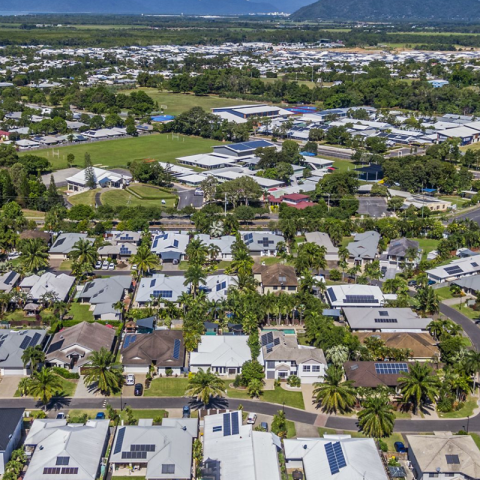For many Australians, buying a first home can feel like climbing a mountain — high deposits, rising property prices, and strict lending criteria often put the dream just out of reach. But the Federal Government is stepping in with significant changes to the Home Guarantee Scheme (HGS), giving more aspiring buyers a fighting chance to get onto the property ladder.
The latest reforms, which took effect on October 1, 2025, are some of the most wide-reaching adjustments since the scheme launched in 2020. By broadening eligibility and removing restrictive caps, the government hopes to ease barriers to entry for first home buyers (FHBs), particularly those struggling with deposit requirements.
How The Scheme Works
At its core, the Home Guarantee Scheme helps buyers purchase a home with a deposit as low as 5%, while avoiding the added cost of Lenders Mortgage Insurance (LMI). Normally, borrowers without a 20% deposit must pay LMI, which can add tens of thousands of dollars to upfront costs.
Instead, under the scheme, the Federal Government acts as a guarantor for the shortfall between the buyer’s deposit and the 20% threshold. This doesn’t mean the government lends money — the buyer still borrows from a bank or lender — but it does reduce the lender’s risk, which in turn removes the LMI requirement.
What’s Changed?
The October 2025 update brought several key changes:
* Caps lifted: Previously, there were annual limits on how many buyers could access the scheme. Now, any eligible buyer can apply.
* Eligibility broadened: The scheme is now available not just to first home buyers, but to anyone who has not owned a property in the past 10 years. This change opens the door for people re-entering the market after divorce, financial hardship, or extended time renting.
* Income caps removed: Previously, individuals and couples had to meet income thresholds to qualify. These have now been scrapped, allowing a broader range of applicants to benefit.
* Higher property value thresholds: Buyers can now purchase more expensive homes under the scheme, with price caps adjusted to better reflect market conditions in capital cities and regional areas.
These changes significantly expand the reach of the scheme, giving thousands more Australians the opportunity to buy sooner rather than later.
Why It Matters
For many young Australians, saving for a deposit is the single biggest barrier to home ownership. Rising property prices mean that even a modest home often requires a deposit of $100,000 or more. Add to this the rising cost of rent, which makes saving harder, and the challenge becomes clear.
By reducing the deposit requirement to 5% and removing LMI costs, the scheme lowers the upfront hurdle considerably. In some cases, this can save buyers $20,000 to $30,000 or more.
At the same time, broadening eligibility recognises that not all home buyers fit the traditional first-time profile. Many Australians who lost property during tough times or stepped out of the market for personal reasons now have a pathway back in.
The Risks To Watch
While the expanded scheme creates opportunities, experts warn that buyers must go in with their eyes open.
Sally Tindall, Canstar’s data insights director, says purchasing with just a 5% deposit has trade-offs:
* Bigger loans: With less money down, buyers borrow more. This means larger monthly repayments.
* Higher interest rates: Some lenders may charge higher rates for low-deposit loans.
* Vulnerability to price falls: With less equity upfront, buyers may be more exposed if property prices decline.
Tindall stresses that while avoiding LMI is a major saving, buyers should budget carefully and ensure repayments are sustainable, particularly in a rising interest rate environment.
A Broader Housing Challenge
While the scheme helps individual buyers, it doesn’t address the structural issues driving affordability challenges. Housing supply remains tight, especially in major cities, and construction constraints mean new supply isn’t coming fast enough.
Industry experts argue that government policy needs to address both sides of the equation: helping buyers into the market while also ensuring more homes are built to meet demand.
Who Benefits Most?
The changes are expected to particularly benefit:
* Young professionals saving for their first home while balancing high rents.
* Families re-entering the market after divorce or financial setbacks.
* Middle-income earners who previously missed out due to income caps.
* Regional buyers now able to purchase at higher property value thresholds.
Data from previous years shows that demand for the scheme has been particularly strong in outer-suburban and regional areas, where buyers can stretch their budgets further.
Real-world Impact
Consider an example: A couple buying a $600,000 home in Melbourne. Under traditional lending, they’d need a $120,000 deposit to avoid LMI. With the scheme, they can enter with just $30,000 down — a difference of $90,000 upfront.
That saving could mean the difference between years of extra renting and stepping into ownership sooner.
Looking Forward
The Federal Government’s expansion of the Home Guarantee Scheme is a clear signal that it wants to make ownership accessible to more Australians. But whether this translates into long-term affordability improvements will depend on broader housing market dynamics, including supply, wages, and interest rates.
For now, the scheme gives first home buyers and market re-entrants a real boost, providing a practical pathway into ownership at a time when many felt locked out.
The dream of home ownership remains alive for many Australians, thanks to policy changes that make deposits smaller and entry points wider. The expanded Home Guarantee Scheme may not solve all of the nation’s housing affordability issues, but for those who qualify, it could be the breakthrough they’ve been waiting for.
By reducing barriers, expanding eligibility, and lifting property value caps, the government is giving more buyers the chance to step into the market sooner. Still, careful planning, budgeting, and financial advice remain essential to making the most of the opportunity.



